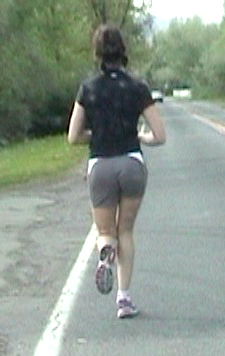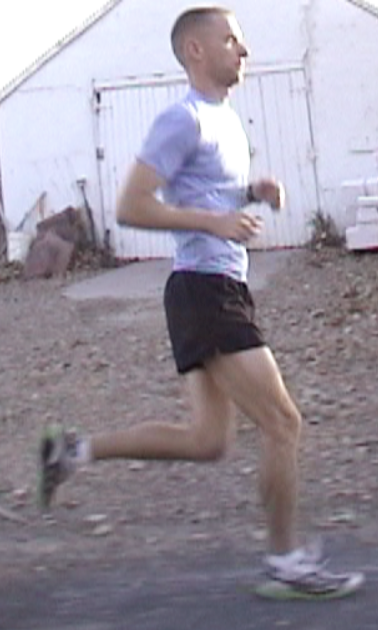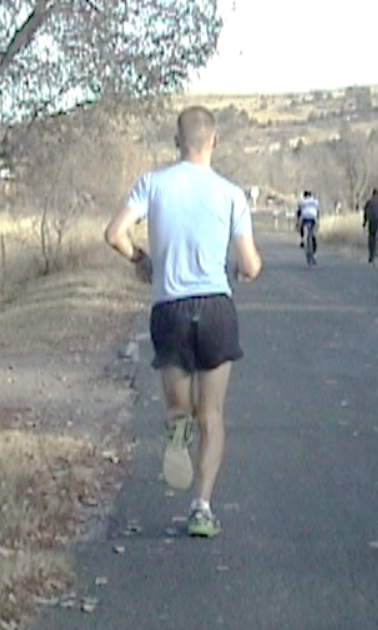
Lateral right hip with inwardly rotated Femur
There are usually two or three form related issues that accompany this injury. At the top of that list is longer ground contact time in general. The lateral muscles of the hip are not designed to deal with either of these issues when running, so they fatigue. This puts more stress on the IT Band to stabilize the inward rotation of the Femur than it is designed for. This is commonly diagnosed as weak lateral hip muscles. The go to strategy for healing this is usually strengthening and a dose of foam-rolling. But the muscles are not weak, they just aren’t designed to deal with the forces created by the running form issues.

Left: Center of Mass behind the planted foot

Right: lateral sway of hip
While this injury can be very aggravating, with the proper form work and visual cues this can be easily corrected. Being able to recognize and teach the skills needed to correct this misuse in real-time that is at the foundation of my Physical Therapy for Runners practice.